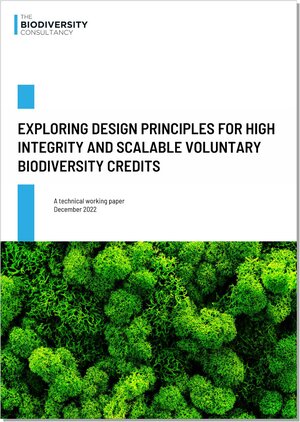Biodiversity Credits: design principles for high integrity outcomes

Biodiversity credits are a core part of a growing global conversation about closing the financing gap for nature protection and recovery. While they offer promise for directing private sector contributions towards effective on-the-ground conservation and restoration, poorly designed biodiversity credit schemes will come with a significant risk of unintended consequences for people and nature.
In this technical working paper, we explore design principles for the development of scalable voluntary biodiversity credits and discuss the challenges in delivering high integrity positive outcomes.
Drawing on lessons learned from the evolution of the carbon credit market, as well as experience from biodiversity offsets and payment for ecosystem services (PES) schemes, we provide an initial outline of how robust design and a flexible framework could deliver both local-scale integrity (achieving tangible gains on the ground) and global-scale integrity (ensuring credits can support societal goals for biodiversity). In the paper, we explore:
- What are biodiversity credits and how can they support a nature-positive future?
- Understanding integrity at local and global scales
- Risks and lessons learned from other market-based approaches
- Principles for high integrity biodiversity credits
- The building blocks of a scalable, global measurement framework
This working paper is offered as an input to the many ongoing discussions about biodiversity credits and to help guide the development of a high integrity credits market. The authors welcome feedback and discussion at:
robin.loveridge@thebiodiversityconsultancy.com
Categories: Nature Positive, The Mitigation Hierarchy, Biodiversity Risk and Opportunity
Business & biodiversity
Join our mailing list to get the latest developments in business and biodiversity

